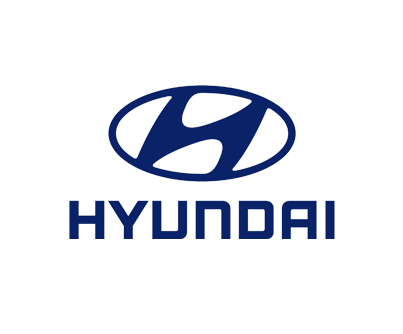

Hyundai Lease Deals
Our great Hyundai lease deals give you a chance to get behind the wheel of some of the most reliable lease cars available at Willow Leasing. From the affordable i10 to the spacious Tucson, there is a model – and a lease deal – for everyone.
Why Lease A Hyundai?
If you want to drive a car built by a manufacturer renowned for reliability, a Hyundai lease is certainly for you.
Hyundai is a multinational automotive manufacturer that was founded in South Korea in 1967. Since then, Hyundai has grown to become one of world’s largest car manufacturers. It has become so renowned because it boasts high reliability on all its vehicles and that, mixed with its affordability has only boosted the company even further.
Our Hyundai lease cars feature a modern exterior and well-equipped interior with an emphasis on natural shapes know as ‘fluidic sculpture’. Hyundai are also popular thanks to their incredibly high safety requirements that are standard with every car unlike some other manufacturers who may charge extra for these features.
Hyundai cars have a luxurious look and atmosphere about them. A Hyundai lease is a smart choice for your next car as a Hyundai is both affordable and reliable. It has a striking appearance and some of the best technology which only further adds to its appeal. A Hyundai lease is also an enticing prospect thanks to Hyundai’s attractive warranties, innovative, equipped vehicles and competitive prices.
Also, Hyundai lease cars are some of the least expensive cars to insure thanks their impressive fuel efficiency. The brand also When it comes to models there are plenty of types to choose from.
Models Available For Lease
Hyundai have a great offering of affordable and reliable SUVs, hatchbacks and saloons. An i10 lease car is the perfect vehicle to get you from A to B whilst the Tucson is a spacious and stylish family crossover.
We also offer lease deals for the i20, Ioniq, Kona and Santa Fe.
What Are The Benefits Of Leasing A Hyundai?
Nationwide Delivery
We offer free nationwide delivery across mainland UK on our wide range of Hyundai cars. This means you can sit back and lease your next Hyundai from the comfort of your home; hassle-free and simple!
Part Exchange Service
At Willow, we can offer a part exchange for your old vehicle! Get an easy and hassle-free way to sell your old car while leasing your brand new one! We can even arrange for your old car to be collected on the same day as your new one arrives.
Brand New Hyundai
When you lease a Hyundai through the team at Willow Leasing, you can be assured you are receiving the latest and most up-to-date model versions of your favourite Hyundai cars. This includes the newest technologies and upgrades available. Some of our favourites are the Tucson and the Ioniq cars!
Price Matching Service
We have a price matching service available on these cars. so if you find another price on your next lease that you prefer, send it to us and challenge us to beat it.
FAQs
Bluelink is Hyundai's name for their car connectivity services. Available through the Bluelink App on your phone or through Hyundai's touchscreen display inside each of their cars.
With the app, before you drive you can check your fuel or charge status, plan your route and set climate control. During your drive, you get better traffic forecasting, can use voice control, connect directly to your phone and Hyundai live services that can find you filling stations, parking spaces, restaurants, and other destinations. After your drive, you can find your parked car, lock your car remotely, and get any notifications on your cars alarm systems.
Check out our great Hyundai deals on the Bayon, Ioniq and Kona and see what Bluelink services you can use on your next Hyundai Lease.
Hyundai offer vehicles across most fuel types: Petrol, Hybrid and Electric. Some of their most popular electric cars are the Kona, Ioniq, and Ioniq 5. Some of the best Hyundai petrol models are the i20 and Tucson.
Check them out above and let us help you get your next lease sorted!
Hyundai have a great range of cars are available for leasing. Our most popular cars that customers order through us are the Ioniq 5, Tucson, Kona and Santa Fe.
Got a question? Feel free to get in touch to see how we can help.
What our customers say...
Great customer service David was so helpful with everything to do with the PCH deal. First time using this method of payment for a car talked me through everything and was always there to answer the phone and answer any queries I had. First deal fell through and he was back on the phone the next day trying to get me a better deal. Couldn't recommend more.
Leased a Hyundai Tucson
I expected from previous reviews that Willow Leasing would give good service in my search for a new Kona EV. I wasn't disappointed. They pulled out all the stops to get the specification I wanted and progressed the transaction without a hitch. All the preliminary checks were completed and the car delivered on time to my home by transporter. Willow cannot be surpassed for service, efficiency and effectiveness.
Leased a Hyundai Kona
The process could not have been simpler. The team at Willow are responsive, patient and very easy to work with. They do what they say and feedback to you really quickly.
Any queries or questions we had were answered incredibly quickly and thoroughly. I will be recommending Willow Leasing to all. We dealt with a few people throughout our transaction and they were all consistently attentive.
Leased a Hyundai Kona














